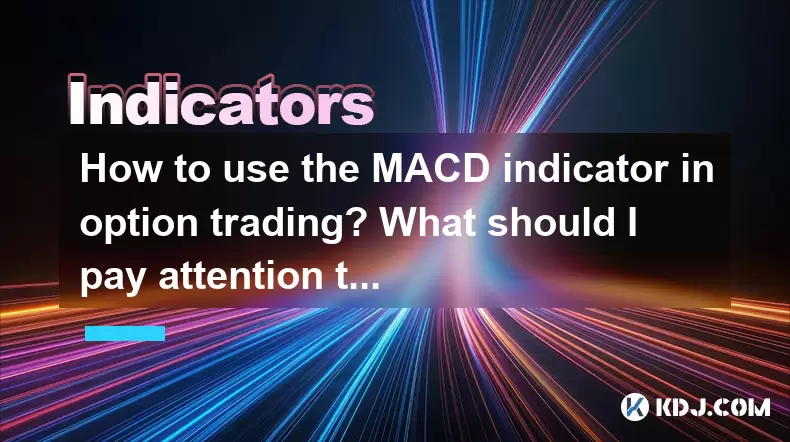-
 Bitcoin
Bitcoin $117900
-2.85% -
 Ethereum
Ethereum $4559
-2.84% -
 XRP
XRP $3.068
-5.67% -
 Tether USDt
Tether USDt $1.000
0.02% -
 BNB
BNB $836.7
-0.81% -
 Solana
Solana $193.2
-2.38% -
 USDC
USDC $0.9998
0.00% -
 TRON
TRON $0.3591
-0.32% -
 Dogecoin
Dogecoin $0.2238
-7.20% -
 Cardano
Cardano $0.9090
4.71% -
 Chainlink
Chainlink $22.55
-4.36% -
 Hyperliquid
Hyperliquid $44.78
-2.41% -
 Sui
Sui $3.771
-4.47% -
 Stellar
Stellar $0.4199
-6.18% -
 Bitcoin Cash
Bitcoin Cash $587.8
-5.02% -
 Ethena USDe
Ethena USDe $1.001
-0.01% -
 Hedera
Hedera $0.2493
-5.06% -
 Avalanche
Avalanche $23.66
-5.54% -
 Litecoin
Litecoin $121.0
-6.80% -
 Toncoin
Toncoin $3.383
-2.39% -
 UNUS SED LEO
UNUS SED LEO $9.287
0.47% -
 Shiba Inu
Shiba Inu $0.00001286
-6.48% -
 Uniswap
Uniswap $10.94
-9.06% -
 Polkadot
Polkadot $3.979
-5.53% -
 OKB
OKB $96.24
-3.88% -
 Dai
Dai $0.9997
0.00% -
 Bitget Token
Bitget Token $4.570
-4.16% -
 Cronos
Cronos $0.1510
-8.87% -
 Ethena
Ethena $0.7251
-6.96% -
 Aave
Aave $310.8
-4.73%
How to use the MACD indicator in option trading? What should I pay attention to for high-leverage products?
The MACD indicator helps traders identify entry and exit points in option trading, but caution is needed with high-leverage products due to amplified risks.
May 22, 2025 at 06:07 pm

The MACD (Moving Average Convergence Divergence) indicator is a popular tool used by traders to gauge the momentum and potential trend reversals in financial markets, including option trading. When used in conjunction with high-leverage products, understanding how to interpret and apply the MACD indicator becomes crucial for making informed trading decisions. This article will explore how to use the MACD indicator in option trading and what to pay attention to when dealing with high-leverage products.
Understanding the MACD Indicator
The MACD indicator is composed of three main components: the MACD line, the signal line, and the histogram. The MACD line is calculated by subtracting the 26-period exponential moving average (EMA) from the 12-period EMA. The signal line is typically a 9-period EMA of the MACD line. The histogram represents the difference between the MACD line and the signal line and helps visualize the momentum of the price action.
Applying the MACD Indicator in Option Trading
In option trading, the MACD indicator can be used to identify potential entry and exit points. Here's how you can apply it:
Bullish Signals: A bullish signal is generated when the MACD line crosses above the signal line. This suggests that the momentum is shifting towards an upward trend, and it might be a good time to consider buying call options.
Bearish Signals: Conversely, a bearish signal occurs when the MACD line crosses below the signal line. This indicates that the momentum is shifting downwards, and it might be an opportune moment to consider buying put options.
Divergence: Another important aspect to watch is divergence between the price and the MACD indicator. If the price is making new highs but the MACD is failing to reach new highs, it could signal a weakening trend and a potential reversal. This can be useful for timing the sale of options or preparing for a change in position.
Using MACD with High-Leverage Products
High-leverage products, such as options, amplify both potential gains and losses. When using the MACD indicator with these products, traders need to be particularly cautious. Here are key points to consider:
Risk Management: High-leverage products require stringent risk management. Set stop-loss orders to limit potential losses. The MACD can help in setting these levels by identifying points of trend reversal.
Volatility: Options are sensitive to volatility. The MACD can help in understanding the momentum behind price movements, but be aware that high volatility can lead to rapid changes in the indicator's signals.
Position Sizing: With high-leverage products, it's crucial to manage position sizes carefully. Use the MACD to gauge market momentum and adjust your position sizes accordingly to manage risk effectively.
Practical Steps to Implement MACD in Option Trading
To effectively use the MACD indicator in option trading, follow these steps:
Set Up the Chart: Open your trading platform and select the asset you wish to trade. Add the MACD indicator to your chart. Ensure the default settings are used (12, 26, 9) unless you have a specific reason to adjust them.
Monitor for Signals: Watch for the MACD line to cross above or below the signal line. A bullish crossover (MACD line crossing above the signal line) may suggest buying call options, while a bearish crossover (MACD line crossing below the signal line) may suggest buying put options.
Confirm with Other Indicators: Do not rely solely on the MACD. Use other technical indicators, such as the Relative Strength Index (RSI) or Bollinger Bands, to confirm the signals provided by the MACD.
Execute Trades: Once you have identified a signal and confirmed it with other indicators, place your option trade. Ensure you set a stop-loss order to manage risk.
Monitor and Adjust: Continuously monitor the MACD and the price action. Be ready to adjust your position based on new signals or changes in market conditions.
Common Pitfalls and How to Avoid Them
When using the MACD indicator in option trading, especially with high-leverage products, there are common pitfalls to avoid:
Overtrading: The MACD can generate many signals, leading to overtrading. Focus on significant crossovers and divergences rather than every minor fluctuation.
Ignoring Market Context: The MACD should not be used in isolation. Consider the broader market context, including news events and economic indicators, which can significantly impact option prices.
Failing to Adjust for Volatility: High-leverage products are highly sensitive to volatility. Adjust your trading strategy and risk management based on the current volatility levels.
Additional Considerations for High-Leverage Products
When trading high-leverage products like options, consider the following additional factors:
Time Decay: Options are subject to time decay, which means their value decreases as the expiration date approaches. Use the MACD to identify short-term trends, but be mindful of the time remaining until expiration.
Liquidity: Ensure the options you are trading have sufficient liquidity. Low liquidity can lead to wider bid-ask spreads, making it more difficult to enter and exit positions at favorable prices.
Strike Price and Expiration: When selecting options, consider the strike price and expiration date in relation to the MACD signals. Align your option strategy with the expected duration and direction of the trend indicated by the MACD.
Frequently Asked Questions
Q: Can the MACD indicator be used for all types of options?
A: Yes, the MACD indicator can be applied to all types of options, including calls and puts, as well as different expiration dates. However, the effectiveness of the MACD may vary depending on the specific characteristics of the option, such as its volatility and time to expiration.
Q: How often should I check the MACD indicator when trading high-leverage products?
A: The frequency of checking the MACD indicator depends on your trading strategy and time frame. For short-term traders, checking the MACD multiple times a day may be necessary. For longer-term traders, daily or even weekly checks might suffice. Always ensure you are monitoring the market closely enough to react to significant changes in the MACD signals.
Q: Is it possible to use the MACD indicator with other technical analysis tools?
A: Absolutely, combining the MACD with other technical analysis tools can enhance your trading strategy. For example, using the MACD in conjunction with the RSI can provide a more comprehensive view of market momentum and overbought/oversold conditions.
Q: What should I do if the MACD signals are conflicting with other indicators?
A: Conflicting signals are common in trading. When this happens, consider the following steps:
- Re-evaluate the reliability of each indicator based on past performance.
- Look at the broader market context to see if external factors might be influencing the signals.
- Use additional analysis tools, such as trend lines or chart patterns, to gain a clearer picture of the market direction before making a trading decision.
Disclaimer:info@kdj.com
The information provided is not trading advice. kdj.com does not assume any responsibility for any investments made based on the information provided in this article. Cryptocurrencies are highly volatile and it is highly recommended that you invest with caution after thorough research!
If you believe that the content used on this website infringes your copyright, please contact us immediately (info@kdj.com) and we will delete it promptly.
- Kazakhstan's Crypto Leap: Bitcoin ETF and Central Asia's Digital Finance Future
- 2025-08-13 12:45:19
- BlockDAG Presale Blazes Past $371M: Fundraising Frenzy Fuels Crypto Sensation
- 2025-08-13 13:05:21
- Meme Coins: Chasing the 2025 Surge – Which Will Moonshot?
- 2025-08-13 10:25:23
- Bitcoin's Wild Ride: Rally, Pullback, and What's Next
- 2025-08-13 10:25:23
- Bitcoin, Bitmax, and Institutional Demand: A New Era of Crypto Investment
- 2025-08-13 10:45:12
- Solana, ROAM, and Airdrops: What's the Buzz in 2025?
- 2025-08-13 11:35:13
Related knowledge

What does it mean when the +DI and -DI cross frequently in the DMI indicator but the ADX is flattening?
Aug 11,2025 at 03:15am
Understanding the DMI Indicator ComponentsThe Directional Movement Index (DMI) is a technical analysis tool composed of three lines: the +DI (Positive...

What does the sudden appearance of a "dark cloud cover" candlestick pattern during an uptrend indicate?
Aug 13,2025 at 11:35am
Understanding the 'Dark Cloud Cover' Candlestick PatternThe dark cloud cover is a bearish reversal pattern in technical analysis that typically appear...

What does it mean when the moving average, MACD, and RSI all send buy signals simultaneously?
Aug 11,2025 at 01:42pm
Understanding the Convergence of Technical IndicatorsWhen the moving average, MACD, and RSI all generate buy signals at the same time, traders interpr...

What does it mean when both the KDJ indicator and the RSI show overbought signals simultaneously?
Aug 13,2025 at 11:35am
Understanding the KDJ Indicator in Cryptocurrency TradingThe KDJ indicator is a momentum oscillator derived from the Stochastic Oscillator, widely use...

What does it mean when the price is trading above the SAR indicator but the red dots are densely packed?
Aug 09,2025 at 11:49pm
Understanding the SAR Indicator and Its Visual SignalsThe SAR (Parabolic Stop and Reverse) indicator is a technical analysis tool used primarily to de...

What does it mean when the candlestick chart forms a "Morning Star" but trading volume is sluggish?
Aug 12,2025 at 06:28pm
Understanding the Morning Star Candlestick PatternThe Morning Star is a three-candle bullish reversal pattern commonly observed in cryptocurrency pric...

What does it mean when the +DI and -DI cross frequently in the DMI indicator but the ADX is flattening?
Aug 11,2025 at 03:15am
Understanding the DMI Indicator ComponentsThe Directional Movement Index (DMI) is a technical analysis tool composed of three lines: the +DI (Positive...

What does the sudden appearance of a "dark cloud cover" candlestick pattern during an uptrend indicate?
Aug 13,2025 at 11:35am
Understanding the 'Dark Cloud Cover' Candlestick PatternThe dark cloud cover is a bearish reversal pattern in technical analysis that typically appear...

What does it mean when the moving average, MACD, and RSI all send buy signals simultaneously?
Aug 11,2025 at 01:42pm
Understanding the Convergence of Technical IndicatorsWhen the moving average, MACD, and RSI all generate buy signals at the same time, traders interpr...

What does it mean when both the KDJ indicator and the RSI show overbought signals simultaneously?
Aug 13,2025 at 11:35am
Understanding the KDJ Indicator in Cryptocurrency TradingThe KDJ indicator is a momentum oscillator derived from the Stochastic Oscillator, widely use...

What does it mean when the price is trading above the SAR indicator but the red dots are densely packed?
Aug 09,2025 at 11:49pm
Understanding the SAR Indicator and Its Visual SignalsThe SAR (Parabolic Stop and Reverse) indicator is a technical analysis tool used primarily to de...

What does it mean when the candlestick chart forms a "Morning Star" but trading volume is sluggish?
Aug 12,2025 at 06:28pm
Understanding the Morning Star Candlestick PatternThe Morning Star is a three-candle bullish reversal pattern commonly observed in cryptocurrency pric...
See all articles

























































































